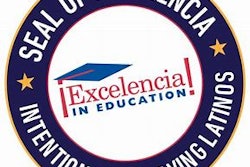Washington, D.C. — To increase high school graduation and college completion rates among America’s growing Hispanic population, policymakers, funders and nonprofit leaders need to take a strategic approach and work in unchartered territory.
That was the advice that Jose Antonio Tijerino, president and CEO of the Hispanic Heritage Foundation, offered Monday at the second annual Grad Nation Summit staged by America’s Promise Alliance.
“Where’s the greatest need? I always say it’s with the fastest-growing, not the most-established,” Tijerino said during a session titled “Connecting to Post-Secondary Education: Knowledge, Access & Affordability.”
“The problem is most companies or funders don’t focus on the fastest-growing areas,” Tijerino said. “They focus on the easier areas,” he said, referring to cities with well-established Hispanic communities, such as Chicago and San Antonio.
The post-secondary education session drew about 130 individuals from among the two-day summit’s 1,400 attendees. The summit itself focused largely on the role that caring adults play in improving the outcomes of youths born into families of lesser economic means, but also touched on school reform at the local, state and federal levels.
Speakers included a host of CEOs from partner organizations and high-ranking Obama administration officials who all exhorted the audience — which ranged from program managers to practitioners — to do more to get America’s youth out of high school and into college.
A new report released at the summit says while the nation is making progress — it says in 2010 there were only 1,550 “dropout factory” high schools where less than 60 percent of the students graduate, or 457 fewer than there were in 2002 — significant work remains and the 50 states represent a mixture of both “leaders” and “laggards” when it comes to improving high school graduation rates.















